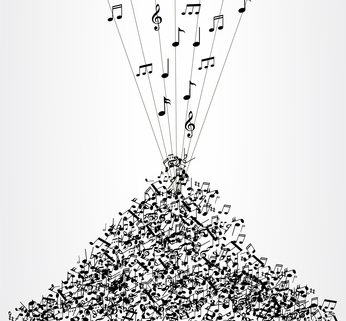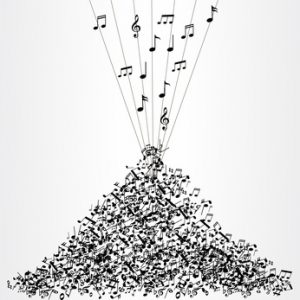Bring Your Workshops Alive with the Sound of Music: Creating a Sonic Landscape
I facilitated a big global workshop last week- some 190 people attended- where we used music in a number of different ways in the event. First, as it was a large group, we used it for crisp starts and stops to our sessions: the music stopping gave a subtle audio cue to people, signalling a transition from the informal networking time, to the formal start of our session (more elegant than me shouting in the microphone for everyone to sit down). We used it just prior to the start of the after lunch sessions to give an energy boost after the hour spent enjoying the lunch buffet. And we used music at the end of the day to create the mood for reflection and to usher in a reception and other evening events. We also wanted local music to give people the feeling of being in the host country (because we spent a lot of our time indoors in a space that could have been located anywhere on the planet). It also filled the vast, high-ceiling-ed and rather anonymous ballroom with warmth making our conversations feel more intimate.
Music can be a wonderful and useful instrument (pun intended) for a process designer when planning the choreography of an event. But I find it is one seldom used. TED does a good job of selecting songs with messages in the lyrics to start coffee breaks, and then tends to end those breaks with short videos (that can again have the effect of forward attention getting and a crisp start.) Other than that it seems that music is infrequently considered in a deliberate fashion to help create the overall atmosphere for dialogue and learning.
What it takes to put a workshop to music
There might be some reasons for this – adding music adds tasks to the long list of materials, equipment, roles and responsibilities for a workshop. You need audio equipment, speakers, a playlist, and someone paying close attention to cue and cut the music. More importantly, you need a special talent to create the playlist in the first place – someone with a good broad knowledge of music who can select just the right piece for the right mood and, if there are lyrics, appropriate ones. All this adds considerable time to what might already be a busy and finely tuned event.
Not as easy as it sounds
Recently at our Bright Green Learning Academy training (Module 8: Practicing Facilitation Approaches and Methodologies) one of our participants ran a brainstorming on this exact topic: which pieces of music fit where in a workshop design? Interestingly, although it seemed an easy task, we all found it incredibly difficult to do on the fly, and found that some of our individual great ideas were certainly a matter of taste. The big lesson: Creating the sonic fabric of the workshop takes encyclopedic musical knowledge, careful consideration and time, but it can have thrilling effects when done astutely.
It turned out that the person who ran the exercise in our Module is himself a music aficionado and he took the exercise a step further a couple of weeks ago. He took a set of criteria given to him by the meeting facilitator and used his own vast musical knowledge to create a sound design for an evening workshop (a Toastmasters meeting).
Here is what he proposed, with at least two suggestions for each part of the meeting. The jazzy feel matched the demographic in attendance and the after-hours feel of the evening event. Read through his proposals below and see if you can feel the surge of the music as the event progresses and the deliberate sonic ebb and flow proposed. Notice his thinking behind the choices:







Leave a Reply
Want to join the discussion?Feel free to contribute!